- Revenue Cycle Management
- COVID-19
- Reimbursement
- Diabetes Awareness Month
- Risk Management
- Patient Retention
- Staffing
- Medical Economics® 100th Anniversary
- Coding and documentation
- Business of Endocrinology
- Telehealth
- Physicians Financial News
- Cybersecurity
- Cardiovascular Clinical Consult
- Locum Tenens, brought to you by LocumLife®
- Weight Management
- Business of Women's Health
- Practice Efficiency
- Finance and Wealth
- EHRs
- Remote Patient Monitoring
- Sponsored Webinars
- Medical Technology
- Billing and collections
- Acute Pain Management
- Exclusive Content
- Value-based Care
- Business of Pediatrics
- Concierge Medicine 2.0 by Castle Connolly Private Health Partners
- Practice Growth
- Concierge Medicine
- Business of Cardiology
- Implementing the Topcon Ocular Telehealth Platform
- Malpractice
- Influenza
- Sexual Health
- Chronic Conditions
- Technology
- Legal and Policy
- Money
- Opinion
- Vaccines
- Practice Management
- Patient Relations
- Careers
Should American Tourists Make Their Own Exit from Europe? Part 6
In pat 6 of Eric Anderson's whirlwind European journey, he takes us to Bulgaria and Romania.
This is stop number 6 in our ongoing journey through Europe. Part 5 can be read here.

The countries in the eastern part of Europe are not familiar to most American tourists. They are somewhat below the visitor's radar unless there are family connections. Because they have never really been on the Grand Tour, they don't have grand budgets or well-developed tourism infrastructures. Thus those countries are more easily visited by touring them with a professional operator. We came to Bulgaria and Romania at the tail end of a Uniworld river cruise. The two countries covered today have three things in common: the locals are not as comfortable in English as other Europeans may be; there's a lot to see over a very scattered terrain and you learn more of a distant country if you have the kind of professional guides tour operators provide. (And that's before #3 — the financial details from tour operators. “Money, money, money! There's no way you get the value we give you if you try and do this on your own!”)
Bulgaria
Our Uniworld Danube cruise brought us to arguably the most historically interesting part of Bulgaria; it even ended in Varna, the site of the great battle in 1444, the last attempt of the Christian Crusaders to defeat the Ottoman Empire. Bulgaria, in fact, was not released from what was called its Ottoman Yoke until the Russian-Turkish War of 1877-78.
(Photography by the author)
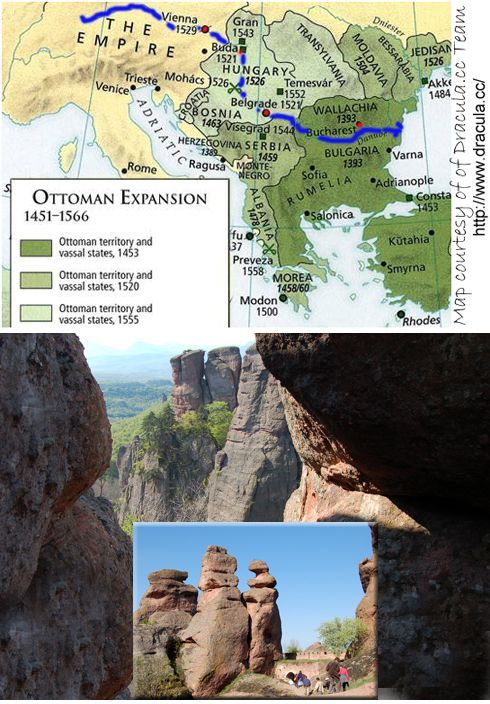
It's not clear to many American tourists (and probably most American politicians) exactly what the Ottoman Empire was but this map of one century of Ottoman expansion might make us all think. The reasons nations go to war are complicated even with hindsight. They include everything from simply not liking a neighbor because of skin color or religion to more complex explanations such as the German claim it needed living space, lebensraum. But lands, interesting even captivating for tourists today, had little value to armies in land grabs, lands such as the (bottom image) the Belogradchik Rocks of eroded Triassic sandstone that remind us of a smaller version of our own Monument Valley

We find a vast medieval fortress here, Baba Vida, on the south bank of the Danube. The only fully preserved castle in Bulgaria, it was built by Vida, the eldest daughter of a 10th century king who, “despairing of how her two younger sisters wasted their inheritance on drunken husbands, spent hers instead on building this castle — and never marrying”, our female guide tells us with a smile of approval. We sit in the castle courtyard as young people perform Bulgarian folk dances that help us forget that below, in the dungeons, are messages carved by prisoners who died there a long time ago.
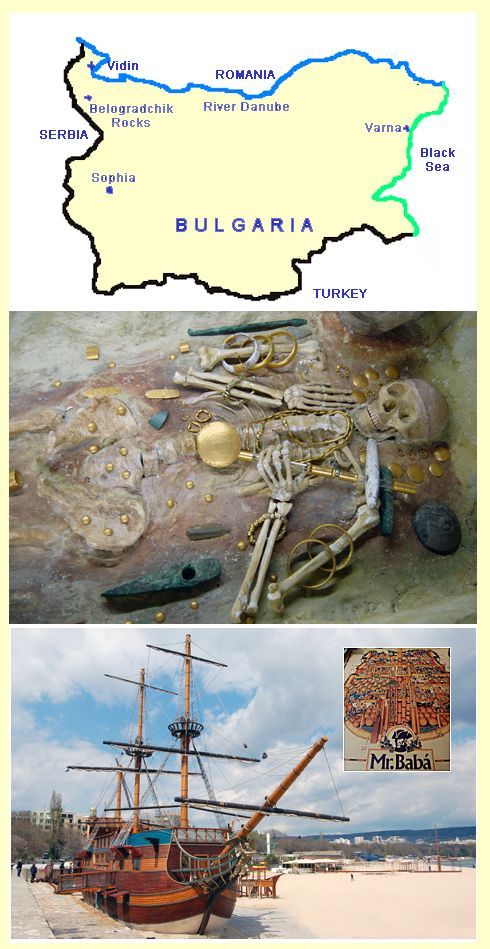
A short drive leads to Varna, a city on the coast of the Black Sea with its famous Archaeological Museum and “The Gold of Varna” thought to be the oldest gold treasure in the world — even though it wasn’t discovered and dug up until 1972. The cache dates back to 4600 BC. And now lunch beckons at a less authentic place, Mr. Baba’s, a local restaurant on a dry-docked sailing ship popular with tourists who care for fun and eating more than history.
Romania

A Uniworld coach takes us to Bucharest, a mysterious city once called the “Paris of the East.” Mysterious because we know so little about it and because it is sometimes confused with Budapest, about 520 miles to the northwest. Here ended our Danube river cruise. We moved out of the upscale Marriott Hotel Uniworld used on its prepaid Danube cruises because now that it was on our dime, we wanted something less expensive. We found, online with a booking website, a great little hotel downtown called the Rembrandt. It had a small cafe and a helpful lobby staff who told us, on check in, if we had booked directly with the hotel we would have saved 20 percent of our charges. The hotel recommended a simple local authentic restaurant Vatra. We would go back there if we were ever again in Bucharest. The inserted image is of the bar scene in the 1879 Caru' Cu Bere in its historic building. We'll go now to the next image to tell you why.
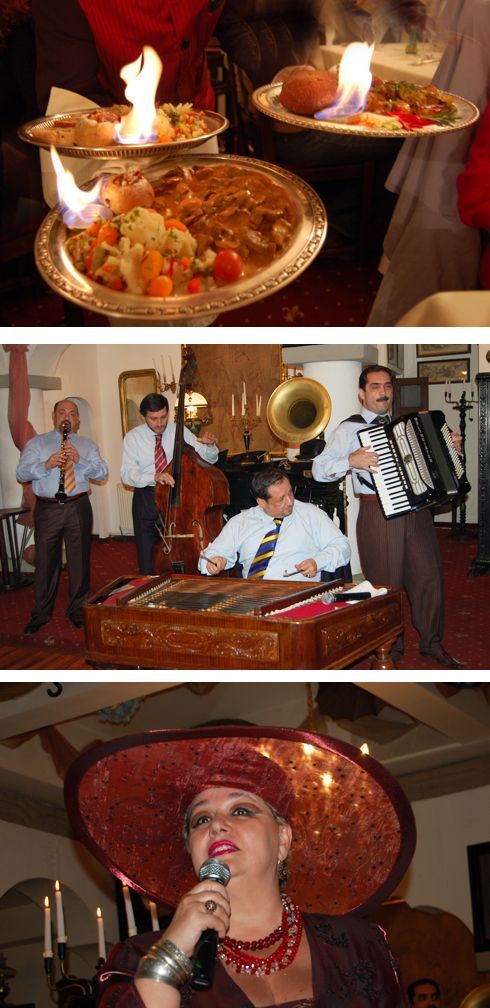
The Caru' Cu Bere provides not only exciting and delicious meals, but for years has been offering a floor show. There's music and song...
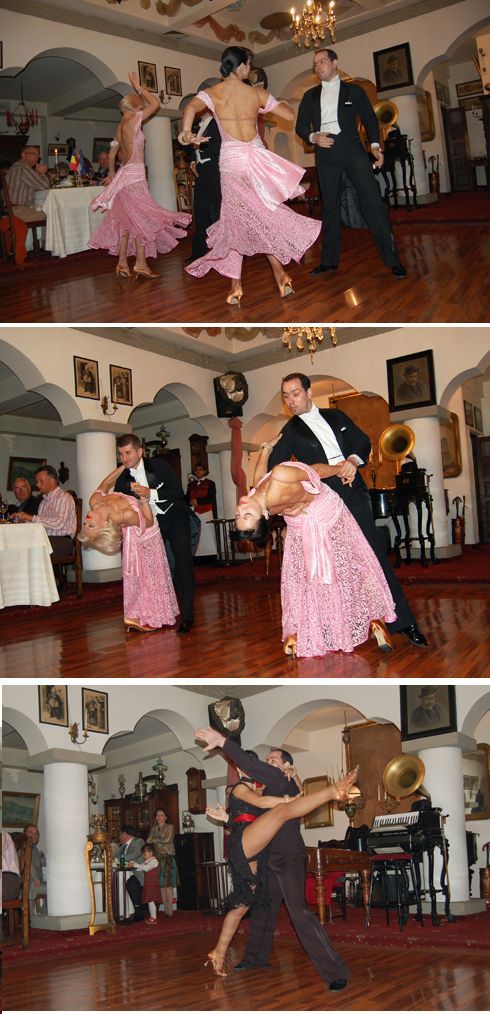
...and there's dance. Oh how there is dance!
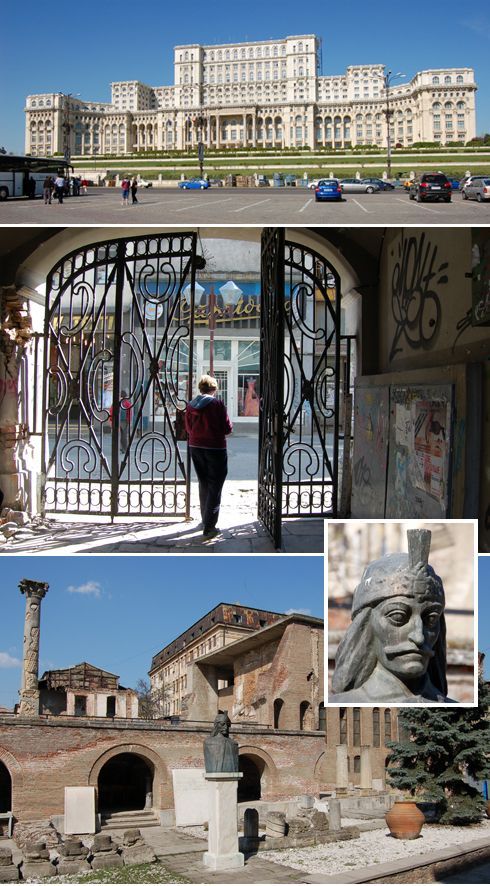
The gigantic stark palace that megalomaniac Nicolae Ceausescu built for himself, and for which he destroyed a large portion on his city, remains as the largest public building after the U.S. Pentagon. Tourists can visit but a more interesting way to see Bucharest is on foot. Invariably the old part of the city leads to a bust of a forbidding man. He is identified as Prince Vlad. He is the basis of the Dracula legend. But there is an issue here: he was not a legend. He really lived.
The hilltown of Sighisoara lies 180 miles to the north of Romania's capital. It's an easy two hours or so train trip, past the city of Ploesti whose oil fields were heavily bombed by the USAAF in World War II. The low level bombing attack suffered massive damage : of 178 B-24 Liberators, 53 were shot down and 55 damaged. Five Medals of Honor were issued for this mission, one of the costliest for the USAAF in the European theater. But our train is heading for a much earlier time in Romanian history, for the birthplace of Vlad the Impaler who was born in 1431, in this famous fortified town of Sighisoara. The town now listed by UNESCO as a World Heritage Site is considered to be “the most beautiful and well-preserved inhabited Medieval citadel in Europe.”
Vlad's father was called Vlad Dracul and the child received the name Dracula, the ending meaning “child of.” Dracula came to power in brutal times and acted accordingly.
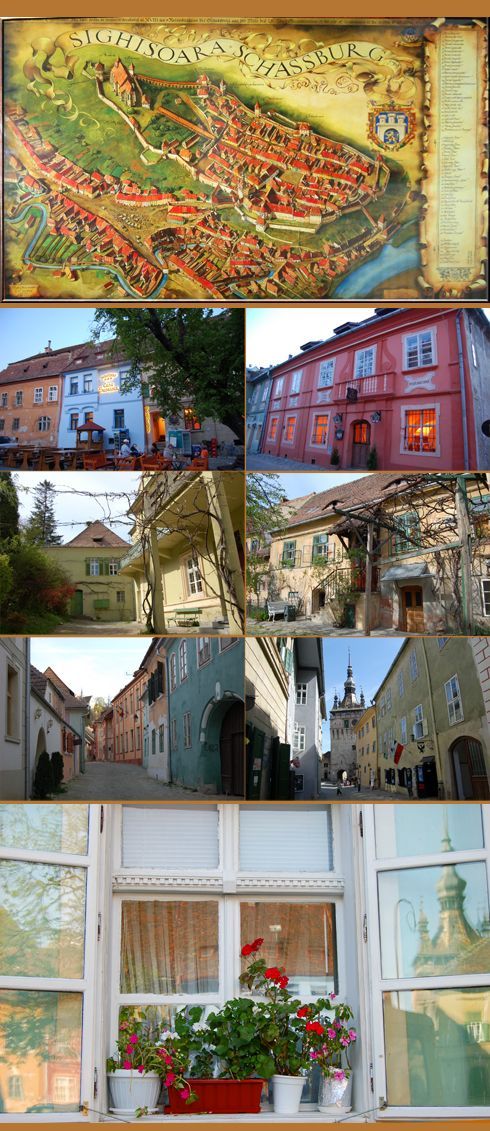
Sighisoara is a delighfully inexpensive town and still relatively unknown to American tourists; it may be just too far off the beaten track. It is colorful and probably the best of all the small places we have stayed in while traveling Europe. For our article click here.

Expect to walk a lot if you are checking up to presence of Dracula in this lived-in part of European history. It is all authentic and 15 years ago a commercial attempt to build a Disney-like amusement park here commemorating the story of Dracula was quickly shot down by the authorities.
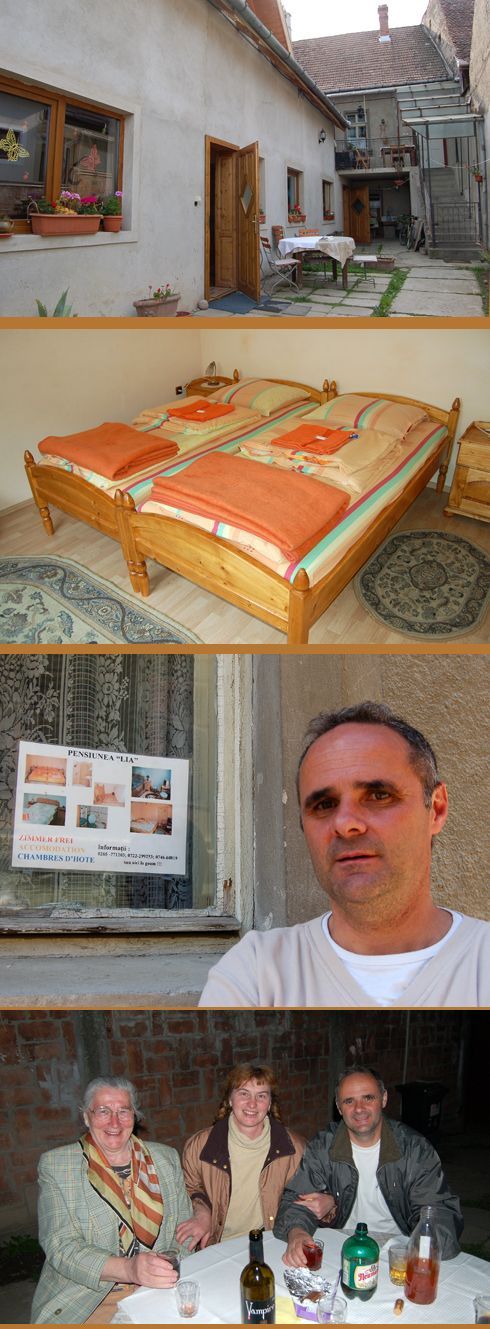
In 2007 we found a friendly native, Adam Marius, from his ad on the internet and booked for several nights for about $20 a night. He met us at the train station and drove us up the slopes of this hill town to his B & B. We met his wife and mother who both went out of their way to make us welcome. His mother lived on the premises and cheerfully fixed breakfast for us each day. You will see from this website with its contact information that guests give the Casa Lia a great rating. We have just verified this is where we stayed; it is and he has not really increased his prices. (We chose the Labor Day weekend 2016 for three nights as a test and the price came up for a Fri/Sat/Sun three night weekend incredibly as under $86.) This place is a great buy in a wonderful town. If you go, give Lia and Marius our best wishes.
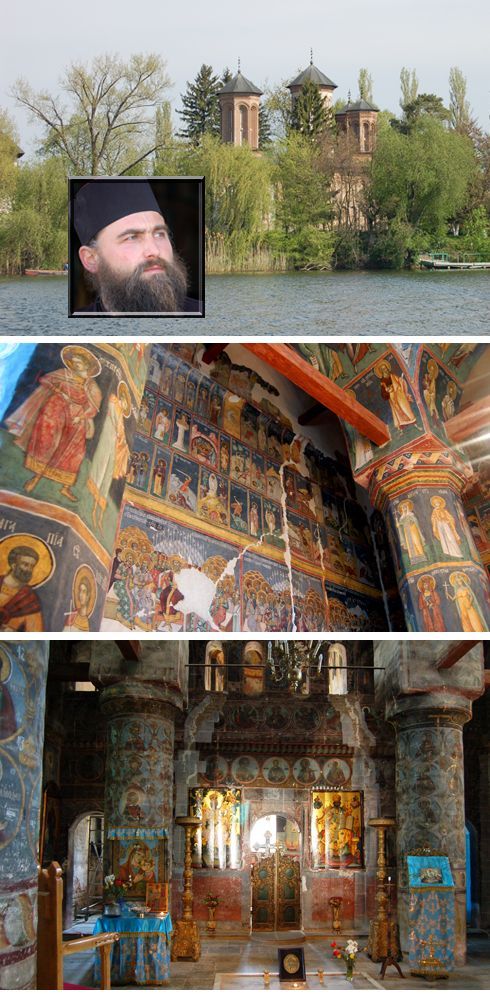
Back in Bucharest we did two things: Fist, we took a short boat trip to the island where the Snagov Monastery has the buried headless body of Vlad III Tepes, the prince called Dracula. The gilded plaque on the floor of the bottom image marks where Dracula's body lies...
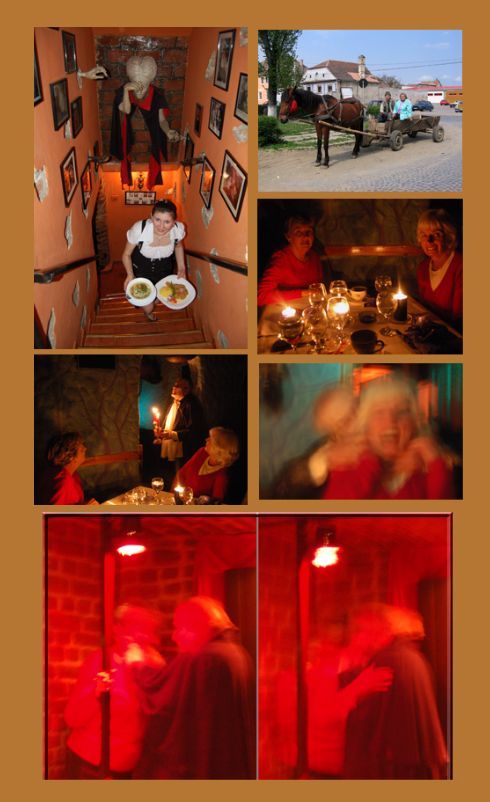
...And back in Bucharest, we went with another couple for fun to Club Dracula where we were told the restaurant was owned by Dracula himself, that the steaks were prime and bloody, that on some occasions Dracula himself might show up to terrorize female guests who sometimes would disappear with him into the basement and never return. I whispered some secrets to the Dracula figure. He obliged by scaring my wife's friend to death then absconded into the basement with Nancy, my wife, so I had to follow fearfully, of course, thinking you reap what you sow.
The Andersons, who live in San Diego, are the resident travel & cruise columnists for Physician's Money Digest. Nancy is a former nursing educator, Eric a retired MD. The one-time president of the NH Academy of Family Physicians, Eric is the only physician in the Society of American Travel Writers. He has also written five books, the last called The Man Who Cried Orange: Stories from a Doctor's Life.
